 I was contemplating just this morning coming back to this blog after a year hiatus. The question I had wasn’t as much what to write about (life contains no shortage of compelling content), as it was how to write about it. Perhaps it’s understandable to feel overwhelmed, even silenced by the enormity of our predicament. During a period of pandemic, of escalating climate-based fires, floods and extinctions, of savage divisiveness between and within every political camp, what tone or angle can one take that does not risk turning platitude or becoming a positivity bypass? Nature often provides a source of wisdom and did so again today, in the form of a metaphor that spontaneously came up during a conversation with a client. In the midst of discussing the many sobering challenges that tend to come later in life – loss of physical abilities, cherished roles, loved ones – she mentioned the rain that fell the previous night. The surprising shower interrupted months of dry heat, smoky air, a California fire season that’s predicted to last through December. She lit up when speaking about the lovely sound of the rain, the reprieve it offered the desiccated landscape. We celebrated the fact that lightening did not come as predicted and no more fires had been ignited by the weather. The brief shower was a pocket of grace, a welcomed gift bestowed by the sky for no apparent reason. I wondered about other pockets of grace we encounter, how they matter even though they can be so easily overshadowed by threats that loom large and imminent.  One part rain to a hundred parts fire may not seem like much to luxuriate in. But it can remind us of what water tastes like, how it feels, how we can dip a toe in gratitude, if we choose to. It can remind us of what continues to be sacred in our lives. If nothing else, a cup of water will help keep my struggling, drought-resistant garden alive.  In this time of narrative gone awry, language used as a weapon to divide and diminish, is there any account we can all objectively agree upon? Does any reality lie outside the realm of story and spin? No-self help is about paring away extraneous notions of personal identity to come into contact with our universal and essential nature. The same process can be applied to help distill public discourse, looking for consensus in certain common denominator values. For example, we all share the basic need for an ecosystem to be healthy enough to support our lives and sustain those of our offspring. If you ask individuals (not corporations) whether they should take steps to ensure clean air for their children to breathe, Democrats would not differ from Republicans in their response. To acknowledge the record-setting heat waves, hurricanes and fires of 2020 is not to take a liberal or conservative side. Yes, we can easily splinter debating about what has caused these calamities and what they portend for the future, but the fact of their existence and their devastating impact is incontrovertible. Whether you define your role as that of steward, servant or master of the environment, we can agree that we must be in relationship with our planet.  When we love something, we are naturally inclined to want to take care of it. This includes family members, pets, even a garden. If a loved one is ill, we are inherently motivated to help them heal. We may spin various accounts in assigning blame for the cause of the illness, but the need to address it is a shared reality. Love is not a partisan issue. Nor is survival. 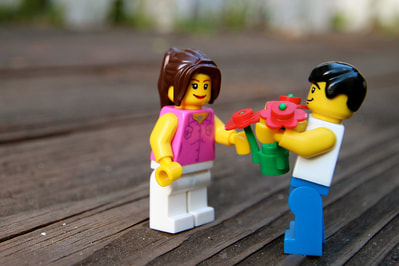 “You always want to make things pretty,” he says to me as I snap a Lego flower onto the table. He’s remodeling Hogwarts castle into a cafe. The boxy little people hold their coffee cups and eat their croissants on benches. I’m combing through a pile of plastic bricks for the rare Lego food item. “You’re right,” I reply. I hand him a tiny neon-colored bottle I find. “Maybe this can be something special for them to drink.” “No, that’s toxic waste.” “Oh.” I go into the kitchen to make our breakfast and return to find the tables turned over, my flowers uprooted, the café overrun by men holding a vast array of firearms. "What happened?" “A terrorist group has taken over. And now the SWAT team is coming in.” I think: Lego can manufacture fifty kinds of weapon to wield, but only croissants for them to eat... I think: Ten years of shielding him from video games and violent movies, toy guns, the news… I think: Is it him? Is it me? Is it gender, society, species? Is it adaptive, constructive? Is it my fault... But I have learned to bite my tongue, smooth out a disapproving brow. I have learned to simply watch and let him play. The SWAT team rescues the hostages, unceremoniously kills the terrorists. There are many casualties. I return to the kitchen to wash the dishes. When I come back, the café is restored. The SWAT team has apparently cleaned up the mess and taken the guns with them. He shows me a Lego man who’s on his knees and holding flowers out to the waitress. “He’s proposing to her.” “Oh. What’s her answer going to be?” “Probably no. But look,” he says pointing to a police officer sitting at a table next to the Star Wars character Finn. Finn is black. The officer beside him is white, as nearly all Lego police are out of the box. My son has positioned the croissant between them. “They’re sharing it.” Several hours later we color in posters for the local protest. Mine says “Act Against Racism.” His: “JUSTICE!”  Keeping Quiet Pablo Neruda Now we will count to twelve and we will all keep still for once on the face of the earth, let’s not speak in any language; let’s stop for a second, and not move our arms so much. It would be an exotic moment without rush, without engines; we would all be together in a sudden strangeness. Fishermen in the cold sea would not harm whales and the man gathering salt would not look at his hurt hands. Those who prepare green wars, wars with gas, wars with fire, victories with no survivors, would put on clean clothes and walk about with their brothers in the shade, doing nothing. What I want should not be confused with total inactivity. Life is what it is about; I want no truck with death. If we were not so single-minded about keeping our lives moving, and for once could do nothing, perhaps a huge silence might interrupt this sadness of never understanding ourselves and of threatening ourselves with death. Perhaps the earth can teach us as when everything seems dead and later proves to be alive. Now I’ll count up to twelve and you keep quiet and I will go.  After nearly a decade of accumulating frequent flyer miles on credit cards, we finally did it. We saved up enough miles to travel overseas. We chose a country with exquisite landscapes and timed the dream trip to correspond with my fiftieth birthday. And then I began reading about the impact of air travel on climate change. I discovered that, of the many carbon-producing personal lifestyle choices, plane flight has one of the biggest footprints by far. Avoiding just one transatlantic roundtrip flight has more carbon-reducing benefit than buying green energy, replacing a typical car with a hybrid, switching to a plant-based diet, or being fastidious with washing clothes in cold water and hanging them out to dry, recycling, or upgrading every single light bulb (according to a 2017 Lund University meta-analysis of 39 peer-reviewed articles). Only living car-free or having one fewer child demonstrated greater carbon-reducing impact! Forgo the trip? This is where the environmentalist rubber hits the road – when personal sacrifice is involved. I must confess, I felt conflicted about completely abandoning this trip of a lifetime. Perhaps there was a way to travel and be environmentally responsible at the same time. A little on-line research revealed that carbon offsetting is available not only for corporate and governmental entities, but also for individuals who want to purchase carbon credits. A credit = “a financial unit of measurement that represents the removal of 2,205 lbs of carbon from the atmosphere.” This involves investing money in carbon-verified projects that help sequester carbon from the atmosphere, offsetting the emissions from my plane flight. 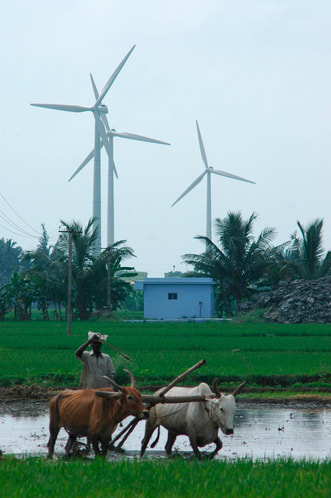 I found Cool Effect, a non-profit that provides an online platform, a type of Crowdfunding, for such carbon offsetting. They offer a calculator that helps you determine how much to donate to compensate for your travel, as well as a range of international projects to invest in that serve “climate, community and biodiversity.” Granted, it’s better to not step on a plane at all. But, short of cessation, we can take the constructive steps of reducing personal long distance travel and purchasing carbon credits. There are reasons other than a pandemic for us to reevaluate our relationship with flying. 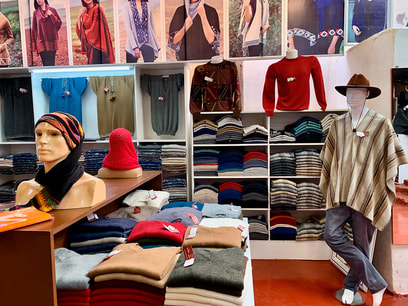 I used to answer this question by saying that, if I won millions of dollars, I’d finance Green World USA – a mythical retail store in which every piece of merchandise sold would be thoroughly vetted through the most rigorous environmental certification processes. Its stock would consist of clothing and household items made from local, organic, sustainably sourced materials produced by fair trade, family-owned businesses. This fantasy entailed mobilizing consumerism to create an enlightened economy, one that enabled a more conscious and caring coexistence with the planet. Back to reality. I have not won the lottery, nor has the Green market developed to the extent it needs to in order to mitigate depletion of natural resources and climate change trajectories. I have recently learned of how the clothing industry is responsible for some of the worst pollution. The production of synthetic fibers and textile dyes, for example, contributes to the poisoning of the water, soil and air. At a personal level, I am committed to changing my retail habits. I have always loved fashion and have tried to purchase second-hand clothing as one way to not foster the “fast fashion” industry. For this blog, I scanned the web to see what was out there that might meet my fairytale Green World USA standards. I decided to start simply – researching underwear. It was heartening to find that a number of online retailers do exist who sell, shall we say, eco lingerie. The selection decreases if you select for those located within the US, and those with fair trade certification. If you screen out those who price their panties at the cost of a kitchen appliance or higher, fewer options remain. But there are options. I ordered several items from BGreen and look forward to their arrival. Wearing a pair of earth-friendly underwear may fall far short of a Green World USA lottery vision, but it’s a start. Like casting a ballot on election day, each individual vote adds up. 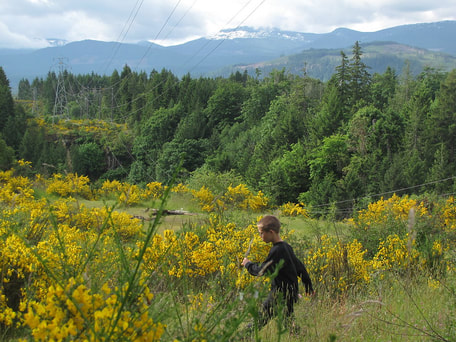 We were surrounded on all sides by a small scotch broom forest. Our mission: to uproot it. A volunteer in his seventies shares with us how he has been coming to these monthly service projects, sponsored by the regional Recreation and Parks Department, for decades. Over that time, he has contributed to the removal of some fifteen square miles of the invasive plant, reducing fire danger in the dry hills of northern California. The ranger, too, speaks of her commitment to replenishing drought-resistant ground cover and biodiversity for endangered species. A botanist, she educates us about the buckwheat and green rush seedlings that we are to plant on this hillside boarding Highway One and the Bolinas lagoon. To be honest, I am simultaneously impressed and a bit doubtful. My hands are nearly shredded from hours of weeding, with very little clearage to show for it. Collectively, our small group estimates plucking over 300 individual plants. The ranger assures me that it does add up and goes on to tell us about the indigenous frogs that have been able re-occupy the marsh due to volunteer efforts like ours. 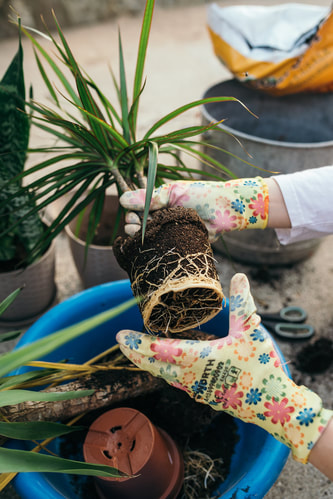 The fact is, it feels good, not the tendinitis in my wrists, but being outside with dear friends on a beautiful day. The four of us had been meeting indoors every month for the past two and half decades since graduate school, discussing personal and professional developments in psychology and spirituality over dinner. It occurred to us recently, in response to the escalating environmental crisis, to broaden the format of our gatherings beyond that of conversation and food. There’s nothing academic about hands-on tending of the local flora and fauna. Call it applied spirituality or psychological self-help . . . 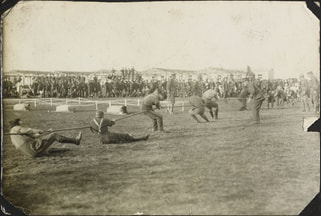 Ever feel positioned in the middle of a tug ‘o war, with one side (perhaps your mind) pulling you toward action, and the other side (the heart?) pulling you toward despair? It’s hard to stay in the middle, assuming a “both…and” stance toward the environment that gives permission for engaging both in action and feeling despair. Yet both sides are equally true and symptomatic of the current climate crisis. In an attempt to de-polarize these seemingly opposing forces, we recently held a community gathering that honored them both. The event consisted of a grief-circle and a letter-writing campaign. The circle offered information about the dire global warming trajectories and gave people time to share their reactions. Needless to say, the tissue box was passed around. 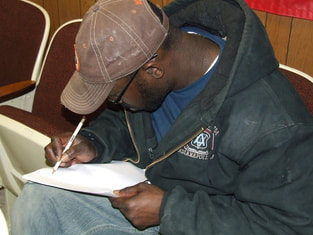 The letter writing involved taking action to help elect officials who will be committed to addressing climate change as a legislative priority. While hand-written letters that invite citizens to vote may seem antiquated, research shows that they do make a significant impact when election time comes. Personalized letters are much more effective than phone calls, e-mails, texts or post-cards in getting out the vote. Our gathering generated over 300 letters. The event demonstrated the elasticity of the human heart, how it can simultaneously express grief and receive inspiration, how it can ache so painfully while continuing to pump and mobilize us.  The wind blew sand into our faces, made us run after the paper and plastic we were trying to collect with our crab-like pincher-picker-uppers. Exhilarating! My son and I were participating in a beach event, sponsored by Surfrider and Children 4 Change – a local non-profit youth empowerment organization. Children 4 Change invites children and their families to volunteer in positive activities that help make a better world, such as assisting those in need at food banks or homeless shelters or the humane society. Our action involved cleaning the San Francisco shoreline of its trash. The effort involved was minimal: after overcoming the initial Sunday morning feet-dragging, the action entailed a forty-minute commute there and back, and a hour or so of beach work (3 hours total). The event sponsors provided all necessary equipment. The benefits of doing the action far exceeded the output involved. In addition to creating a cleaner beach, we enjoyed spending time outside on a beautiful coast with others, experiencing the elements of sun, wind and water. The sport of who could fill up their bucket first kept us competitively scanning the sands, collecting bottles and beach toys, wrappers and cans, and, sadly, needles. So many environmental actions involve slow incremental change. But the impact of ridding a beach of its trash is immediate and visible and quite satisfying. Without a doubt, it was a productive and fun morning that positioned us nicely for an afternoon spent munching chips and guacamole, watching our team play, and alas lose, in the Superbowl. 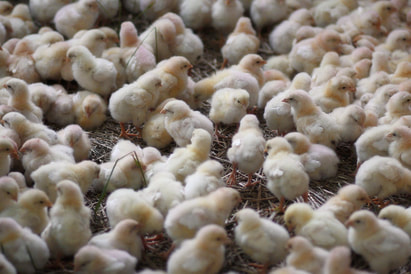 I had been stuck for years as an aspiring (aka, unsuccessful) vegetarian. In my twenties and early thirties, the addiction to meat kept me from walking the path my moral compass set before me. Simply “knowing better” wasn’t enough when faced with a menu or standing at the deli section of the grocery store. Frustrated with my lack of follow-through, I finally took drastic measures and exposed myself to food industry photographs that graphically documented the fate of cows, pigs, chickens, sheep and other animals on factory farms. I can never dislodge those images from my brain nor the heartache that arises when they occasionally still pass through my mind. But my behavior changed immediately and permanently, or at least for over ten years now and running. The one missing piece to the story is the fish, how they slipped right through my watery vegetarian resolve. I can’t remember the rationale at the time – whether I considered them lesser conscious beings or just needed to have something with protein to eat. But continue to eat them, I did. 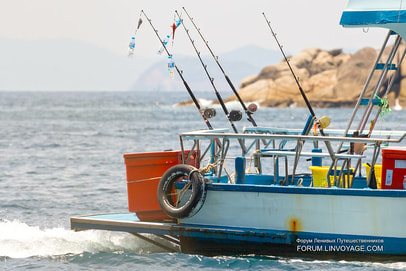 When I read now of the ecological collapse in the seas driven by industrial fishing, I realize that eating fish is no longer sustainable. It’s an environmental issue, as well as a moral one. So I am ready, as of writing this, to eliminate fish from my diet (though I might make a rare exception when camping to go creek fishing with my son). Unlike other actions, this one doesn’t require any prep time or effort. It’s just a turning away from another section of the grocery store. On a related note, if you’re tired of the forced choice between a plant vs meat-based diet, check out the article below on a whole new option: food made out of unicellular life –microbes. The article is one of the most hopeful I’ve read in a long long time, addressing how various environmental crises (global soil crisis, global warming crisis, pollination crisis, farming-related pollution, water shortage, among others) can be solved by the precision fermentation of proteins. |
AuthorK.Gustin, Ph.D. Archives
September 2021
Categories |
Photos from dvanzuijlekom, kevin dooley, Rawpixel Ltd, Jaykhuang, Marco Verch, IQRemix, Pest15, jenni from the block, www.cemillerphotography.com, Pierre PRESTAT, UNMEER, shixart1985 (CC BY 2.0), Benedikt Lang, biernackip, Ryan Dickey, Gamma Man, sgamble48, quinet, Günter Hentschel, tedeytan, nicolas.boullosa, Andreas Brandell Photography, Feed My Starving Children (FMSC), Dick Thompson Sandian, steve p2008, Ministère du Travail, de l'Emploi et de la santé, varmarohit, keepitsurreal, marcoverch, USEmbassyPhnomPenh, seattleanimal, hillels, sustainablejill, audi_insperation, benagain_photos, markus119, u07ch, Ale Art, pockethifi, milomingo, SchuminWeb, Vladimir-Morozov, Pablo F. J., Aardwolf6886, arundel and brighton, barnimages.com, krossbow, travelourplanet.com, Pictures by Ann, symphony of love, Shadowgate, Becky Matsubara, Martin Hesketh, David Paul Ohmer, maf04, KellyMercer, Sue90ca MORE OFF THAN ON, Günter Hentschel, Montclair Film, Carol (vanhookc), wuestenigel, paologmb, quinn.anya, marcoverch, Sarah Skiold-Hanlin, Jon_Callow_Images, Yahoo Inc, gregarch2, USFWS Mountain Prairie, CityofStPete, Theo Crazzolara, cafecredit, OIST (Okinawa Institute of Science and Technology), poptech, Free For Commercial Use (FFC), Phil Roeder, PragmaticFix, Phuketian.S, fabola, Chilanga Cement, BiblioArchives / LibraryArchives, GerryT, San José Public Library, EU Civil Protection and Humanitarian Aid Operation, COD Newsroom, {Guerrilla Futures | Jason Tester}, snkoigi, Tony Webster, focusonmore.com, fred_fiii, francisco_osorio, JovenesPosLAC, shixart1985, dsearls, 4nitsirk, IISG, AFL-CIO Field, Free Public Domain Illustrations by rawpixel, SortedForYa, Keith Allison, amira_a, Anne Worner, verchmarco, Toolstotal, Tuerkis Doerky, Thomas Naas Photography, Stiller Beobachter, josve05a_at_Wikimedia, Kenneth@Vetter, paologmb, markus spiske, chrisjtse, byzantiumbooks

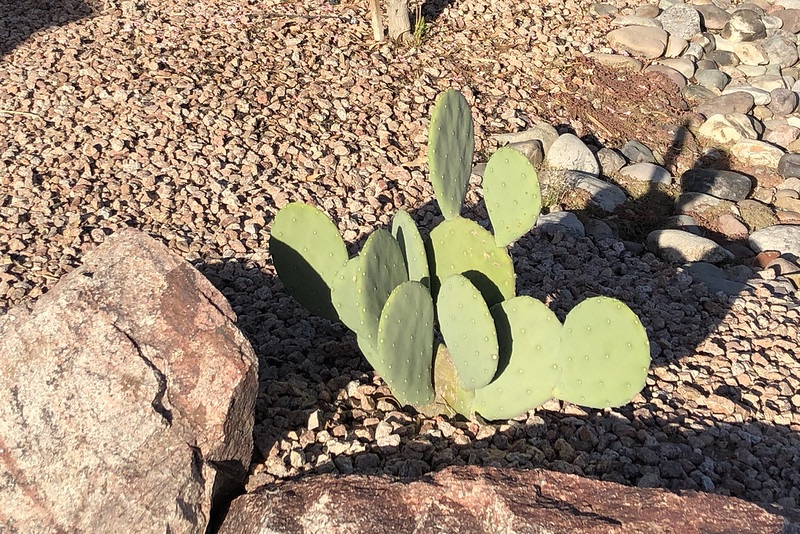
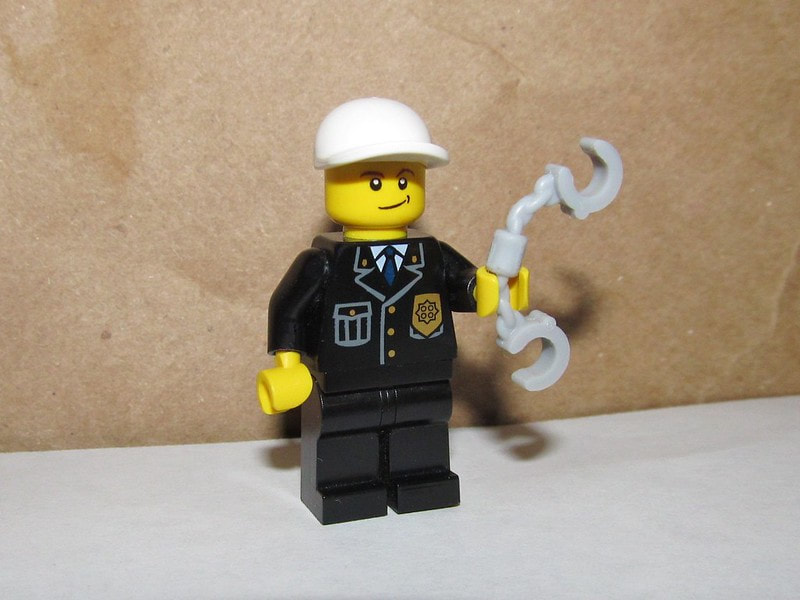


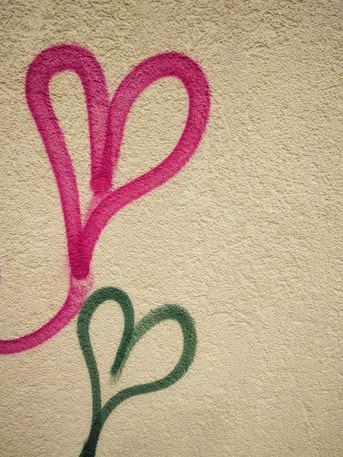

 RSS Feed
RSS Feed